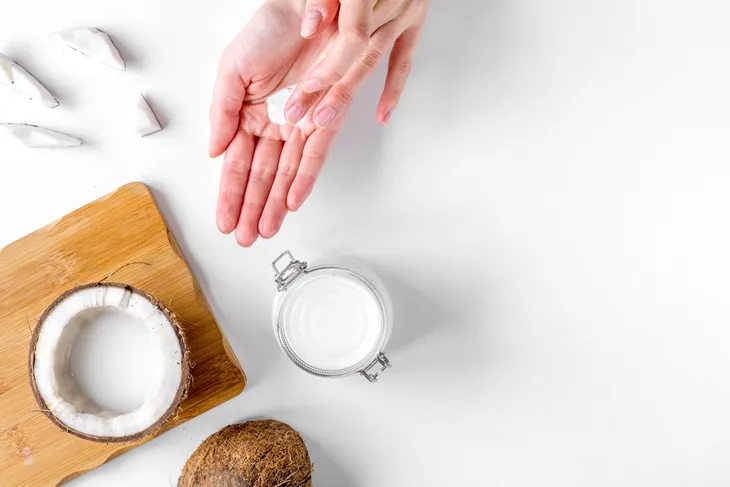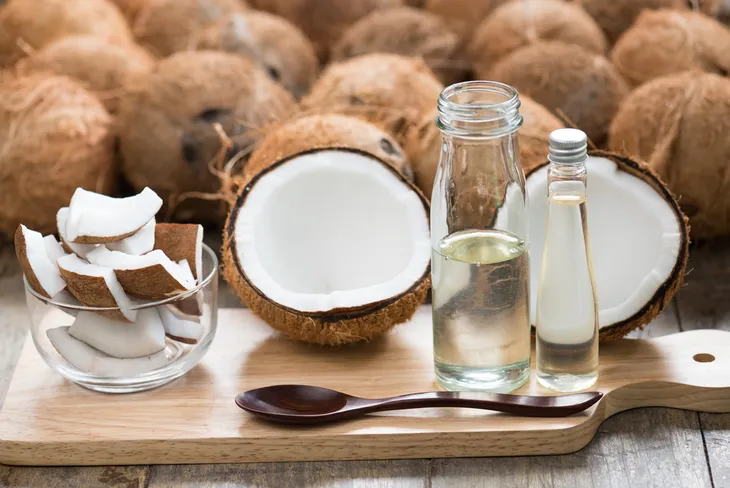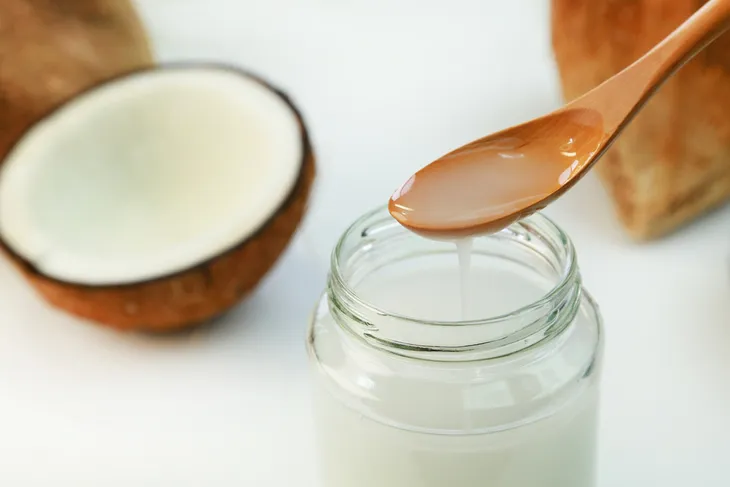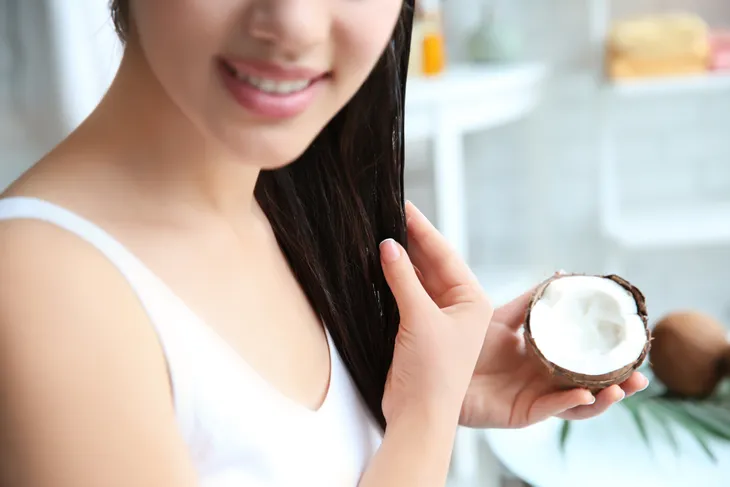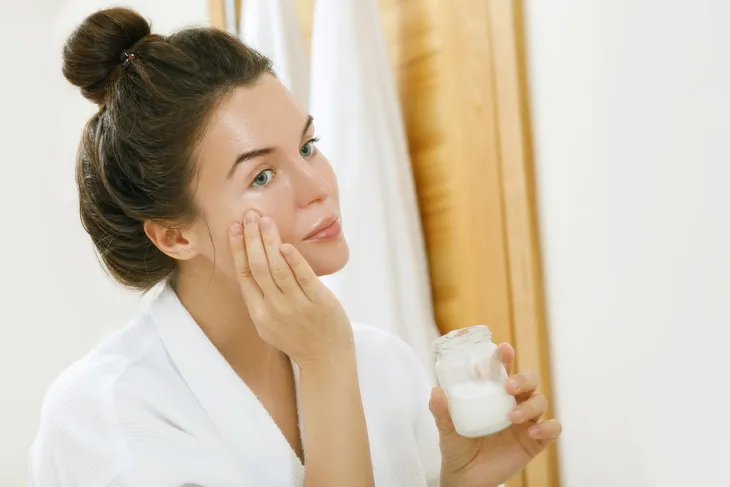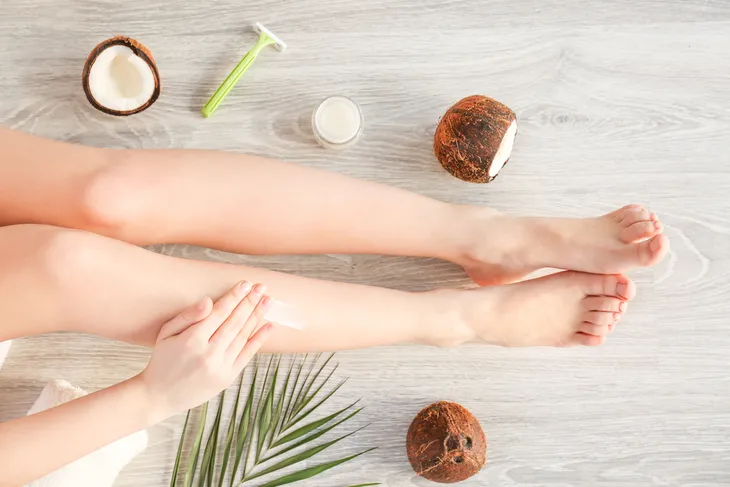For years coconut oil was demonized as one of the worst kinds of fat you could ingest. Since then, science has backtracked on its accusations of coconut oil clogging your arteries and killing us one heart attack at a time. Science now touts the many benefits of coconut oil for it’s great ability to cook with, and bake with, and, for some of us, even having a spoonful a day. From aiding in digestion and metabolism to promoting heart health, and from staving off infection to boosting brain function, coconut oil may be the “it” cure-all right now.
While it may not save your relationships or your bank account, coconut oil does have some fantastic tangible uses beyond baking and cooking. In fact, the entire family from birth up to seniors can benefit from this oh-so-wonderful oil. So let’s highlight some top uses for coconut oil that may have you reaching for that Costco-sized tub of it…
1. Newborn
After you bring home your precious little bundle of joy, it can be really concerning for any new parent when their newborn begins developing red bumps all over their sweet faces. Baby acne is common, and often thought to be caused by hormones from breast milk. Don’t fret, coconut oil can help clear your baby’s skin, moisturize and heal those little red bumps, and have your newborn looking, well, good as new!
Another common skin condition often found in newborns is cradle cap. Simply rub some coconut oil on the scalp, let it sit and soften for about an hour, and then comb gently with a fine-tooth comb or a soft brush to remove the cradle cap. Follow this scalp treatment with a bath to help wash away any excess oil or flakes.
2. Baby
Coconut oil works 2 ways for diaper rash in babies, as a method of prevention and as a healant. It contains antimicrobial, antiviral, antibacterial, and antifungal properties that help to promote healing. It also contains lauric acid (which is also found in breast milk) to help treat bacterial and fungal problems. On top of its healing agents, coconut oil can act as a barrier between the skin and the moisture/waste in your baby’s diaper.
Don’t just stop at using it on your baby’s bottom. You can completely eliminate baby lotions from your home and replace them with coconut oil. It can also be used to spot treat patches of dryness that babies often get. This is an especially great solution for those little ones with sensitive skin.
3. Toddler
If your toddler is anything like mine were, bath time is essential. How DO they get dirt behind their ears, anyhow? Save yourself the step of moisturizing them down with lotion afterwards, and add some coconut oil to their bath for added moisture. This also helps with the constant washing…of everything.
My kids all developed eczema at different stages during childhood, but when they were toddlers I found dryness to be the most pesky—inside the elbows, on their chins, and on the backs of the knees. It’s so uncomfortable for them, and nearly impossible to convince them to not scratch. Coconut oil, with the moisturizing, antimicrobial, antiviral, and antibacterial agents mentioned can quickly turn around eczema. I tried it last week on my daughter and was shocked that it worked better and faster than any $20 pharmacy cream I used in the past.
4. School-Aged Children
If you have a school-aged child, you’ve likely received a dreaded notice that “lice were found in your child’s class”. Again, coconut oil can provide dual support in this case. For prevention, it can create slick surface on your child’s hair making it difficult for lice to cling to. If you add a drop of tea tree oil, it will create a smell that makes your child less likely to attract the pesky bugs.
If you’re already found lice on your child’s head, apply coconut oil to the whole head and hair, cover with a shower cap, and leave on for an hour to overnight. The oil coats and suffocates the bugs so you can simply remove them with a lice comb. Wash your child’s hair and re-do this same treatment again in 7 days to kill any newly hatched lice. Coconut oil provides a much safer and natural alternative to over-the-counter pesticide treatments. Coconut oil also provides bug protection in the great outdoors. Due to its anti-inflammatory properties it creates a barrier between the skin and any dust, dirt, and bacteria your child may pick up when playing outside.
5. Pre-Teen
Your pre-teen likely cares more and more about his or her personal hygiene, but keep in mind they’re caring for their hygiene for the first time on their own. Having coconut oil on hand can assure they won’t harm themselves with at home treatments. Teach your pre-teen how to do a moisturizing hair moisturizing treatment by combing a dab through their hair before washing. This will ensure tame, frizz free locks while they attempt those fancy fishtail braids they learned on YouTube.
Crafty pre-teens will love to make DIY lip balm! All they’ll need is a small empty container, coconut oil, a drop of another oil (i.e., avocado or olive oil) and a small slice of any existing lipstick you have kicking around. Melt the mixture for 10- to 30- seconds in the microwave, and mix and pour into the empty container. Why not add some glitter in there too? Let your lip balm solidify and then they can show it off to all of their friends at school.
6. Teen
When acne strikes, it can really hit a teenager’s self esteem hard. Often desperate to repair and hide pimples, harsh solutions are introduced, often with their own set of nasty side effects. Coconut oil has 3 benefits for teen acne. First, it contains powerful microbial agents that when applied on the skin can help prevent infection. Second, it helps replace the protective layer of skin often removed by constant wiping, picking, or washing.
Coconut oil is also a rich source of Vitamin E, which keeps sebum glands healthy and functioning properly. Healthy sebum glands naturally clear blockages, treating the issue at the root of the problem and not just when symptoms occur. When acne is present, coconut oil is also a natural anti-inflammatory that can be taken orally or topically. I recommend you apply it topically for the best outcome.
7. Women
It’s funny how we want our makeup to “stay all day”—until it’s time to remove it—especially if you wear waterproof makeup. Makeup removers and wipes can tug and pull at the skin, leaving you with a tight, dry complexion. Thankfully, coconut oil is well proven at breaking down hard-to-remove makeup. Scoop a dab onto your fingers and the coconut oil will begin to melt in your hands. Rub it all over your face, and wipe away the coconut oil and makeup with a cotton pad. Be careful not get any in your eyes as it can cause temporary blurred vision.
Once you’ve removed your makeup you can also swap out your nighttime anti-aging cream for some natural wrinkle preventing coconut oil! Not only is it rich in antioxidants, coconut oil can prevent fine lines from forming. Coconut oil is a natural moisturizer that contains emollient, which helps minimize wrinkles that have already graced your beautiful face.
8. Men
Yes, MEN, you can benefit from this too! Coconut oil makes an amazing shaving cream, protecting sensitive skin, preventing nicks and cuts, and also speeding healing if you accidently nick yourself. Not a shaver? Well, coconut oil makes a great beard oil to help foster a full, healthy beard; goatee; or mustache while moisturizing any skin hidden behind your scruff. Onward to your wizard goals!
Maybe you’re too manly for a teeth-whitening regime, but have you tried oil pulling? Simply melt 2-teaspoons of coconut oil in your mouth, and swish between your teeth and gums for 20 minutes. Then spit, rinse, and brush as normal. Oil pulling can increase oral health, kill harmful bacteria, help with sensitive teeth, and whiten your chompers as well!

